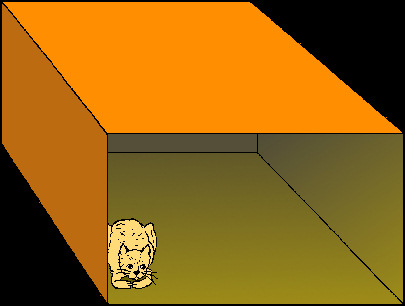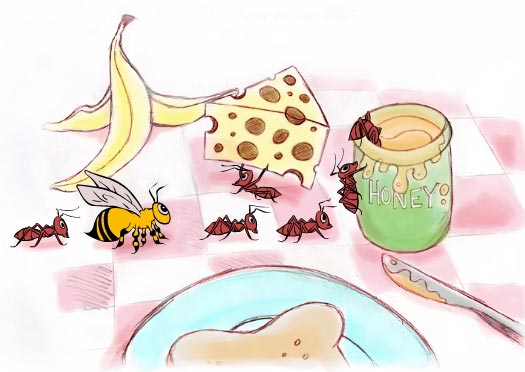B-SLIM:
Bilash's Success-Guided Language Instructional Model
We talk so
much about self directed learning and have structured policies and proposed
practices around the assumption that all learners are equally
self-directed. However, practitioners
know that not all learners are equally self-directed. In fact, teachers also know from experience
that some learners need to be taught to be self-directed. By being based on students’ ‘feelings of
success’ in learning a second language (SL), B-SLIM (Bilash's Success-guided
Language Instruction Model) incorporates enough scaffolding (structure and
support) at each phase of a lesson or series of lessons for learners who are
less self sufficient to succeed while simultaneously providing opportunities
and direction for the more self-directed student to push forward. For example, while a less self-directed
student might need to follow a template several times before really ‘getting’
the structure of a form such as a brief event review (in order to be able to
create one on his/her own as an OUTPUT or 'proving it' assignment), a more
self-directed learner may only need to hear or see the model once and be able
to replicate and creatively alter it!
What are
the theoretical underpinnings of the B-SLIM model?
Cognitive
Science (Piaget, Vygotsky, Gagne) (We organize knowledge of different types
into schema through mental processes. As
learners who are active participants we require scaffolded instructional
material that utilizes demonstrations, illustrative examples and corrective
feedback to maximize memory retention.)
Constructivism
(Bruner) (We construct our own understanding of the world by generating our own
rules and mental models to make sense of our experiences.)
Developmentalism
(Ryle, Schwitzgebel) (We learn concepts and dispositions in a gradual way
frequently passing through periods of being "in between" genuine
understanding and failure to understand.)
What are
the goals of the B-SLIM model?
-
To
develop self directed learners, especially in second languages
-
To
ensure that every learner succeeds at each phase of the learning process by
maximizing exposure to concepts through all learning styles/intelligences and
encouraging intellectual/thinking growth in systematically developed steps
-
To
help students develop all aspects of language by applying research findings
from all areas of second language learning and acquisition (language awareness,
pronunciation, vocabulary, grammar, situations- fluency-accuracy, culture and
Culture, learning strategies, listening comprehension, speaking, writing,
reading, forms, skills, content, motivation-attitude)
-
To
ensure that learners can transfer what they have learned in one familiar
context to new contexts.
-
To
learn language and to learn through language.
-
To
identify success in learning in concrete provable terms (assessment for
learning and assessment of learning).
What are
the characteristics of the B-SLIM model?
1. linear
2. hierarchical
3. recursive
4. success-driven
It is linear
in that each phase of B-SLIM is designed along a continuum and activities at
the beginning of the phase are simpler (less cognitively demanding) than those
at the end. For example, activities at
the beginning of the ‘getting it’ phase are more structured and focused than
those at the end of the ‘getting it’ phase. The same is true about ‘using it’
activities.
Similarly,
each type of input or 'giving it' can be placed along a continuum so that L2
learners have specific goals at beginner, intermediate and advanced
stages. For example, being able to
“speak” for a beginner may mean saying isolated words or short sentences with
long pauses between them while speaking for an intermediate learner may be
described as the ability to express simple and complex sentences in dialogue
about familiar topics without pauses and with minimal errors.
It is
hierarchical in that each phase is more difficult than its predecessor (it
calls upon more cognitive resources than previous phases). Furthermore, with the progression through
each phase the teacher’s roles change and the class time should involve more
and more time for students to produce or create in the L2. However, just as one who is going up a set of
stairs between the second and third floor cannot say precisely which floor they
are on when they are going up those stairs, some activities may appear to
belong to both the previous and next phases at the same time, being advanced
versions of one phase and simpler versions of another.
As a
recursive model, the teacher can introduce an activity at ANY phase of the
model and recognize whether the activity is appropriate for the student(s) or
not; if it is too difficult teachers can clearly see what supports students
need in order to progress through the phase and beyond and provide them. If the task is not sufficiently challenging
more advanced activities can be foreseen and provided. Furthermore, the B-SLIM fully acknowledge
that sometimes learners think they understand something but only when they
begin to use or apply it do they recognize that their understanding is not
totally clear. Thus arises an
opportunity for student questions, which is an opportunity for the student to
take initiative to be a self-directed learner.
It also recognizes that some learners can mentally process information
so rapidly that they can appear to ‘skip’ the ‘getting it’ phase (or that they
may make hierarchical leaps through acquisition of some vocabulary, grammar or
cultural features).
Lastly, the
B-SLIM model has at its core, the goal of making learners feel successful. The model is success-driven in that it
provides the necessary structure and support for students to feel successful at
all stages of the learning process. For
example, in order to student success with oral language during the ‘getting it’
or ‘using it’ stages, teachers may want to provide visual supports, which will
allow students to produce more than what they may be able to produce without
this added support. By facilitating learner success through B-SLIM, teachers
are able to increase positive feelings and attitudes in students which in turn
increases student motivation and investment in the language.
การสอน
B-SLIM MODEL
วิธีสอนแบบ
B-SLIM เป็นรูปแบบหนึ่งของการสอนภาษาอังกฤษเป็นภาษาที่สองเพื่อมุ่งเน้นการสื่อสารโดยอาศัยหลักการและแนวคิดทฤษฎีพัฒนาการเชาวน์ปัญญาของพีอาเจต์(Piaget) ทฤษฎีพัฒนาการเชาวน์ปัญญาของวิก็อทสกี้
(Vygotsky) และทฤษฎี การเรียนรู้โดยการค้นพบของบรูนเนอร์ (Discovery
Aproach) ซึ่ง Olenka Bilash เป็นผู้ออกแบบวิธีการสอน (B-Slim
Overview.)
แนวคิดเกี่ยวกับการสอนภาษาอังกฤษเพื่อการสื่อสาร (Communicative Language
Teaching) จุดมุ่งหมายของวิธีสอนภาษาอังกฤษเพื่อการสื่อสารมุ่งให้ผู้เรียนใช้ภาษาที่เรียนในการสื่อสารทำความเข้าใจระหว่างกัน และคนส่วนใหญ่มีความเชื่อว่า
ถ้าผู้เรียนมีความรู้เกี่ยวกับโครงสร้างทางภาษาและคำศัพท์แล้วจะสามารถใช้ภาษาเพื่อการสื่อสารได้
แต่ข้อเท็จจริงแล้วพบว่าถึงแม้ผู้เรียนจะเรียนรู้โครงสร้างของภาษาต่างประเทศมาแล้วเป็นอย่างดีก็ยังไม่สามารถพูดคุยหรือสื่อสารกับชาวต่างประเทศ
หรือจะใช้ได้บ้างก็จะใช้ภาษาในลักษณะที่เจ้าของภาษาไม่ใช้กัน แม้จะเป็นภาษาที่ถูกต้องตามหลักไวยากรณ์ ด้วยเหตุนี้
นักภาษาศาสตร์และผู้ที่เกี่ยวข้องกับการเรียนการสอนภาษาต่างประเทศจึงได้พัฒนาแนวคิดเกี่ยวกับการสอนภาษาต่างประเทศเพื่อการสื่อสารขึ้น
สุมิตรา อังวัฒนกุล (2540
: 17–21) กล่าวถึงการสอนภาษาเพื่อการสื่อสาร
ว่าการสอนภาษาเพื่อการสื่อสารเป็นแนวคิดที่เกิดจากความตระหนักถึงความจริงที่ว่าความรู้ ความสามารถทางด้านศัพท์ ไวยากรณ์
และโครงสร้างทางภาษาเพียงอย่างเดียว
ไม่สามารถช่วยให้ผู้เรียนใช้ภาษาที่เรียนได้อย่างมีประสิทธิภาพและเหมาะสมในการสื่อสารกับผู้อื่น การใช้ภาษาเพื่อการสื่อสาร
เป็นการใช้ภาษาระหว่างผู้รับสารและผู้ส่งสาร
ปัจจุบันเป็นที่ยอมรับว่าวิธีสอนที่ทำให้ผู้เรียนสามารถนำภาษาไปใช้ในการสื่อสารได้จริง (Actual Communication) ได้แก่ วิธีการสอนตามแนวการสอนภาษาเพื่อการสื่อสาร(The Communicative
Approach) เนื่องจากจุดมุ่งหมายหลักของวิธีการสอนดังกล่าวเน้นความสามารถในการสื่อสาร (Communicative Competence)
ของผู้เรียน
ขั้นตอนการสอนแบบ B-SLIM
ธูปทอง กว้างสวาสดิ์ (2544
: 24-30) ได้สรุปไว้ว่ากิจกรรมการเรียนการสอนตามแนวสื่อสารมีกิจกรรมที่หลากหลาย แต่กิจกรรมหนึ่งที่น่าสนใจ คือการสอนภาษาที่สองของ บิลาช Bilash’s
Second Language Instructional Model หรือ B-SLIM Model. ประกอบไปด้วย
5 ส่วน
ดังนี้
1. ขั้นวางแผนและการเตรียม (Planning
and Preparation) ขั้นนี้ครูจะเลือก
กิจกรรมและเนื้อหาให้สอดคล้องกับจุดมุ่งหมายของหลักสูตรและความสนใจของผู้เรียน นอกจากนั้นครูต้องจัดเตรียมสื่อและอุปกรณ์
ที่จำเป็นเพื่อช่วยให้ผู้เรียนเกิดการเรียนรู้
สื่อต้องน่าสนใจและสอดคล้องกับเนื้อหา
และควรเป็นสื่อที่เป็นของจริง
2. ขั้นทำความเข้าใจตัวป้อนหรือข้อความรู้ใหม่
(Comprehensible Input)
ขั้นนี้ครูต้องอธิบายความรู้ใหม่ ข้อมูลหรือตัวป้อนใหม่ โดยตั้งอยู่บนฐานความรู้เดิมของผู้เรียน ครูสามารถให้ตัวป้อนเหล่านี้
ในการที่นักเรียนจะเข้าใจหรือเกิดการเรียนรู้
โดยการขยายความ อธิบายเพิ่มเติม
บิลาช ได้จำแนกตัวป้อนด้านความรู้ออกเป็น 9 ชนิดดังนี้
2.1
การรับรู้ภาษา (Language Awareness)
บิลาชและทูลาซิวิคซ์ กล่าวถึงการรับรู้ทางภาษาว่า
การรับรู้ภาษาเกี่ยวข้องกับเรื่องต่อไปนี้
- ทักษะทางภาษา
- ทัศนคติ
- การเรียนรู้และการใช้ภาษา
สิ่งเหล่านี้ผู้สอนต้องบูรณาการเข้าในกิจกรรมการเรียนการสอน
และสอนแบบผู้เรียนเป็นศูนย์กลางและขึ้นอยู่กับความพร้อมของผู้เรียน
2.2
การออกเสียง (Pronunciation) เป็นส่วนสำคัญของการพูด
และเป็นทักษะที่ยากสำหรับผู้เรียนภาษาต่างประเทศก่อนที่ผู้เรียนจะสามารถพูดได้เป็นประโยค เขาต้องออกเสียงคำได้ก่อน
การออกเสียงควรเน้นความคล่องและจังหวะ การขึ้นเสียงสูงต่ำ ตามบริบทและสถานการณ์
2.3 ศัพท์
(Vocabulary) สามารถแยกออกเป็น
2 ชนิด
คือ Active Vocabulary หมายถึง คำศัพท์ที่ผู้เรียนเข้าใจความหมายออกเสียงได้ถูกต้องและใช้การพูดและเขียนได้
Passive Vocabulary หมายถึง
คำศัพท์ที่ผู้เรียนรู้ความหมายและเข้าใจเมื่อพบคำนั้น
ในรูปประโยคหรือข้อความ
แต่ไม่สามารถใช้พูดและเขียนได้
คำศัพท์ในการสอนแต่ละครั้งต้องไม่มากหรือน้อยเกินไป
และต้องสอนจากศัพท์ที่ใกล้ตัว หรือคำศัพท์เพื่อการดำรงชีวิต (Survival Vocabulary) หมายถึง
ศัพท์ที่ผู้เรียนใช้สื่อสารในชีวิตประจำวัน เช่น ศัพท์เกี่ยวกับ สัตว์
คำถาม คำทักทาย
2.4
ไวยากรณ์ (Grammar) การสอนหลักไวยากรณ์ในปัจจุบันมีแนวโน้มจะยึดหลักการสอนตามแนวสื่อสาร สามารถสอนได้
2 วิธี คือ
2.4.1 การสอนแบบอุปนัย คือ
การสอนโดยใช้กิจกรรมต่างๆ ขึ้นมาก่อนแล้วครูและนักเรียนช่วยกันสรุปกฎเกณฑ์
2.4.2
การสอนแบบนิรนัย คือ การสอนที่เริ่มจากกฎเกณฑ์ แล้วจึงฝึกการใช้กฎเกณฑ์
โดยใช้กิจกรรมต่างๆ หรือให้ทำแบบฝึกหัดเพื่อให้สนองวิธีการเรียนรู้ของนักเรียน
ครูต้องให้ตัวอย่างเพียงพอ
และสาธิตการใช้จนผู้เรียนรู้และผู้สอนต้องแม่นกฎเกณฑ์ก่อนที่จะสอนนักเรียน
2.5
สถานการณ์และความคล่องแคล่ว (Situation/Fluency) การเรียนรู้ภาษาที่สอง (Second
Language-SL) และภาษาต่างประเทศ (Foreign Language FL) หมายถึง
การพัฒนาความสามารถในการใช้ภาษาได้หลากหลายตามบริบทและสถานการณ์ได้อย่างคล่องแคล่ว
2.6 วัฒนธรรม
(Culture) วัฒนธรรมสามารถแบ่งเป็น 2
ส่วน คือ ซีใหญ่
(Big “C”) หมายถึง ประวัติศาสตร์
ภูมิศาสตร์ วรรณคดี ศิลปะดนตรี ซีเล็ก
(Small c) หมายถึง
ขนบธรรมเนียมประเพณี ลักษณะนิสัย
การแต่งกาย อาหาร
การใช้เวลาว่าง
การเรียนภาษาต่างประเทศ คือการเรียนวัฒนธรรมต่างประเทศ ซึ่งไม่สามารถแยกภาษาออกจากวัฒนธรรมได้
การสอนวัฒนธรรมครูควรสอนในรูปของกระบวนการพบปะสังสรรค์ มากกว่าที่จะบอกให้รู้ข้อเท็จจริงทางวัฒนธรรม
ครูต้องจัดกิจกรรมเพื่อช่วยให้ผู้เรียนเข้าใจวัฒนธรรมของเจ้าของภาษา
2.7 กลวิธีการเรียนรู้ (Learning Strategy) กลวิธีการเรียนรู้ หมายถึง การกระทำพฤติกรรม ขั้นตอน
และเทคนิคเฉพาะในการเรียนภาษาที่สองและภาษาต่างประเทศ เช่น
การหาผู้ช่วยในการฝึกการสนทนาเพื่อพัฒนาทักษะพูด
การใช้เทคนิคปรับปรุงปัญหาในการเรียนภาษาของตัวผู้เรียนเอง ซึ่งมีวิธีการเรียนที่ต่างกัน
กลวิธีการเรียนมีความสำคัญเพราะเป็นเครื่องมือสำหรับการใช้ภาษาในการปฏิสัมพันธ์ การจะเลือกเทคนิคที่มีความคล้ายคลึงกัน
และเลือกซ้ำบ่อยครั้งและจะใช้ภาษาในการสื่อสารได้ไม่ดีเท่าที่ควร
ดังนั้นครูจำเป็นต้องรู้และเข้าใจถึงกลวิธีที่หลากหลายและประสบผลสำเร็จ ซึ่งจะส่งผลให้ผู้เรียน เรียนรู้ได้ด้วยตนเอง
2.8 ทัศนคติ
(Attitude) เป็นองค์ประกอบที่บ่งบอกถึงความเชื่อว่าผู้เรียนมีทัศนคติที่แตกต่างต่อสิ่งต่อไปนี้ คือ
ภาษาเป้าหมาย (Target
Language) ผู้พูดภาษาเป้าหมาย (Target Language Speaker) ค่านิยมสังคมทางการเรียนภาษาเป้าหมาย
ทัศนคติเหล่านี้มีผลต่อความสำเร็จทางการเรียนภาษาที่สอง การมีทัศนคติด้านบวกต่อภาษาเป้าหมาย
และวัฒนธรรมของภาษานั้นมีความสำคัญต่อผู้เรียน
เพราะทัศนคติบวกย่อมเป็นสิ่งเร้าให้ผู้เรียนอยากปฏิสัมพันธ์กับเจ้าของภาษา
นอกจากนั้นทัศนคติด้านบวกยังส่งผลให้ผู้เรียนเลือกใช้กลวิธีการเรียนรู้ที่หลากหลาย อันจะช่วยให้ผู้เรียนพัฒนาการเรียนรู้ด้านการฟัง อ่าน
และเขียนได้อย่างรวดเร็ว
จะเห็นได้ว่าทัศนคติสำคัญมากในการเรียนภาษาที่สอง ครูควรจำไว้เสมอว่าการแก้ไขทัศนคตินั้น
ไม่สามารถทำได้ในเวลาอันสั้น ต้องใช้เวลาและเทคนิคที่หลากหลาย
2.9
ทักษะ (Skill) หมายถึง ทักษะฟัง พูด อ่าน และเขียน และยังรวมไปถึงทักษะอื่นๆ
เช่น ทักษะการแก้ปัญหา การค้นคว้าวิจัย การหาความรู้ด้วยตนเอง
การเรียนร่วมกับผู้อื่น
2.9.1 ทักษะการฟัง
(Listening) ทักษะการฟังถือว่าเป็นทักษะแรกในการสื่อสาร
ถ้าฟังไม่รู้เรื่องก็จะไม่สามารถพูดโต้ตอบได้ ดังนั้นครูจำเป็นต้องออกแบบกิจกรรมเพื่อส่งเสริมทักษะฟัง นูนัน และแลมป์ แนะนำว่า
สิ่งสำคัญที่ครูจำเป็นต้องรู้ก่อนที่จะเตรียมกิจกรรม คือ การสอนทักษะฟัง ควรคำนึงถึงสถานการณ์หรือบริบท กล่าวคือ
เลือกเนื้อหา
ครูควรออกแบบกิจกรรมฝึกการฟังที่หลากหลายและน่าสนใจ เช่น
ครูให้นักเรียนฟังเทปแล้ววาดภาพ
เป็นต้น
2.9.2 ทักษะการพูด
(Speaking) ในการออกแบบกิจกรรมเพื่อเสริมทักษะพูดครูต้องดูว่ากิจกรรมนั้นต้องเริ่มจากง่ายไปหายาก
โดยเริ่มจากกิจกรรมที่ครูควบคุมให้ความช่วยเหลือ
พร้อมทั้งมีรูปแบบและตัวอย่างให้นักเรียน
กิจกรรมเหล่านี้ เรียกว่า กิจกรรมภายใต้การควบคุม (Conversation) เช่น ในช่วง Intake-Using
It ก่อนที่ครูจะให้นักเรียนฝึกสนทนาครูต้องมีแบบการสนทนา (Conversation Matrix) หรือ
Dialogue ให้นักเรียนหลังจากนั้นจึงให้นักเรียนทำกิจกรรมที่ยากขึ้น เช่น
บทบาทสมมุติ การเลียนแบบการอภิปราย
ในช่วง Intake-Using It การออกแบบกิจกรรมจากง่ายไปหายากเป็นการลดความวิตกกังวล
(Anxiety) ของผู้เรียน
2.9.3 ทักษะการอ่าน
(Reading) ก่อนที่จะลงมือปฏิบัติกิจกรรมที่เกี่ยวกับทักษะการอ่าน ครูต้องจัดกิจกรรมก่อนการอ่าน (Preceding Activity)
เช่นการพูดคุยหรืออภิปราย
ประสบการณ์หรือเรื่องราวที่สัมพันธ์กับเรื่องที่จะอ่าน
หลังจากนั้นเป็นการแจ้งจุดประสงค์การอ่านว่า หลังจากการอ่านแล้วนักเรียนต้องได้อะไรบ้าง เช่น
ตอบคำถาม
อภิปรายกับเรื่องที่อ่าน
สิ่งที่สำคัญที่สุดคือ
ครูต้องแนะนำคำศัพท์หรือโครงสร้างใหม่ก่อนที่จะให้นักเรียนทำกิจกรรม
กิจกรรมสำหรับพัฒนาทักษะการอ่านจัดได้ทั้งกิจกรรมเดี่ยว คู่
กลุ่มทั้งชั้น
ขึ้นอยู่กับความยากง่ายของเนื้อหาที่อ่าน
2.9.4 ทักษะการเขียน
(Writing) บิลาชย้ำว่า ทักษะการเขียนเป็นกุญแจดอกสำคัญที่จะทำให้ผู้เรียนประสบผลสำเร็จในการเรียนภาษาที่สอง
การเรียนรู้การเขียนไม่ใช่ที่เกิดได้โดยธรรมชาติ
เหมือนการพูดสิ่งที่พูดบางครั้งผู้เรียนไม่สามารถเขียนได้ บิลาชได้ออกแบบการสอนเขียนเรียกว่า แบบ (Form) เทคนิค “แบบ” นี้
บิลาชออกแบบจากง่ายไปหายากเพื่อลดสิ่งที่เป็นอุปสรรคในการเรียนรู้ (Affective Filter)
ซึ่งได้แก่
เจตคติ แรงจูงใจ ความวิตกกังวล
เทคนิคการสอนเขียน “แบบ” ประกอบไปด้วย 4
ส่วน ดังนี้
2.9.4.1
ส่วนเอ (Quadrant A) เรียกว่าส่วน “ศัพท์น้อยกฎน้อย” เริ่มจากการฝึกเขียนในสิ่งที่ใช้คำศัพท์น้อยและกฎน้อย เช่น
คำขวัญ ใบสมัคร เมนู
คำพังเพย สุภาษิต ข้อความ
ปริศนา คำทาย การ์ด
เป็นต้น
2.9.4.2
ส่วนบี (Quadrant B) เรียกว่าส่วน “ศัพท์มากกฎน้อย” จำนวนคำศัพท์มีคำศัพท์มากแต่กฎเกณฑ์น้อย เช่น
ไดอารี่ คำถาม เพลง
ละครสั้น จดหมายส่วนตัว โปสเตอร์
แบบสอบถาม เป็นต้น
2.9.4.3
ส่วนซี (Quadrant C) เรียกว่าส่วน “กฎมากคำศัพท์น้อย” คือการเขียนต้องใช้กฎเกณฑ์มาก แต่ใช้คำศัพท์น้อย ได้แก่ การเขียนเกี่ยวกับชีวประวัติ
ปกนอกหนังสือ ปฏิทิน บัตรเชิญ โฆษณา โปสเตอร์
เกี่ยวกับการท่องเที่ยว โฆษณาทางโทรทัศน์ เป็นต้น
2.9.4.4
ส่วนดี (Quadrant D) เรียกว่าส่วน “คำศัพท์มากกฎเกณฑ์มาก” การเขียนในขั้นนี้จะยากขึ้น เพราะสิ่งที่เขียนนั้นประกอบไปด้วยทั้งกฎเกณฑ์และคำศัพท์เป็นจำนวนมาก ได้แก่
นิยายผจญภัย นิทานเปรียบเทียบ ตำนาน
กฎการเล่นเกม เขียนบทกวี การอธิบาย
หนังสือพิมพ์ประจำห้อง
เป็นต้น ดังภาพประกอบ
A ศัพท์น้อยกฎน้อย คำขวัญ
ใบสมัคร เมนู คำพังเพย
สุภาษิต ข้อความ ปริศนา
คำทาย การ์ด B ศัพท์มากกฎน้อย ไดอารี่ คำถาม
เพลง ละครสั้น จดหมายส่วนตัว
โปสเตอร์ แบบสอบถาม
C กฎมากคำศัพท์น้อย ชีวประวัติ
ปกนอกหนังสือ ปฏิทิน บัตรเชิญ
โฆษณา โปสเตอร์ เกี่ยวกับการท่องเที่ยว โฆษณาทางโทรทัศน์
D นิยายผจญภัย นิทานเปรียบเทียบ ตำนาน
กฎการเล่นเกม เขียนบทกวี การอธิบาย
หนังสือพิมพ์ประจำห้อง
ภาพประกอบ
แบบการสอนเขียนของบิลาช
3. ขั้นกิจกรรมเพื่อความเข้าใจและฝึกทักษะ (Intake Activity)
ขั้นนี้
หมายถึง
ช่วงเวลาที่ผู้เรียนรู้
เนื้อหาหรือตัวป้อน (Input) ผู้สอนพึงระลึกเสมอว่า ผู้เรียนไม่สามารถเข้าใจข้อมูล สาร หรือตัวป้อนทั้งหมดที่ผู้สอนป้อนในขั้นแรก
ครูจึงจำเป็นต้องจัดกิจกรรมในขั้นนี้เพื่อให้ผู้เรียนมีโอกาสทำสองประการคือ ประการแรก
ครูต้องจัดกิจกรรมเพื่อช่วยให้นักเรียนเข้าใจตัวป้อน เรียกว่า
กิจกรรมเพื่อความเข้าใจ (Intake - Getting) กิจกรรมเพื่อความเข้าใจนี้จะใช้เวลาจนกว่าครูจะแน่ใจว่านักเรียนเข้าใจ Input
ครูอาจจะออกแบบ 4-5
กิจกรรม
แล้วแต่ความยากง่ายของตัวป้อน
กิจกรรมเพื่อความเข้าใจเป็นกิจกรรมที่ง่ายต่อการปฏิบัติมีตัวอย่างแบบแผน เพื่อช่วยให้ผู้เรียนลดความกังวลในการปฏิบัติ
ประการที่สอง
หลังจากที่นักเรียนเข้าใจตัวป้อนแล้ว
ครูต้องออกแบบกิจกรรมที่ยากและซับซ้อนมากขึ้น เพื่อให้นักเรียนได้มีโอกาสฝึก เรียกว่า
กิจกรรมฝึกใช้ภาษา (Intake
– Using It) กิจกรรมฝึกใช้ภาษาเป็นกิจกรรมเพื่อการสื่อสารและเป็นธรรมชาติมากกว่ากิจกรรมเพื่อความเข้าใจ
(Getting It Activity)
4. ขั้นผล (Output) กิจกรรมขั้นนี้
ส่งเสริมให้ผู้เรียนใช้ภาษานอกห้องเรียนทั้งทักษะ
ฟัง พูด อ่านและเขียน
ลักษณะกิจกรรมขั้นนี้เป็นกิจกรรมสร้างสรรค์และส่วนมากเป็นกิจกรรมเดี่ยว (Individual Activity)
เช่น
โครงงาน การเขียนไดอารี่ เรียงความ
เรื่องสั้น เป็นต้น
5. ขั้นประเมินผล (Evaluation) ขั้นการสอนนี้ครูรวบรวมข้อมูลต่างๆจากการสังเกต
หรือซักถามผู้เรียนในขั้นต่างๆ เพื่อต้องการทราบปัญหาต่าง ๆ และแก้ไขปัญหาในการสอนครั้งต่อไป
ขั้นนี้เป็นขั้นการประเมินผลการเรียนของนักเรียน
ครูอาจใช้การประเมินทักษะตามสภาพจริง (Authentic Assessment) และการสอบเก็บคะแนนปลายภาคเรียน
















